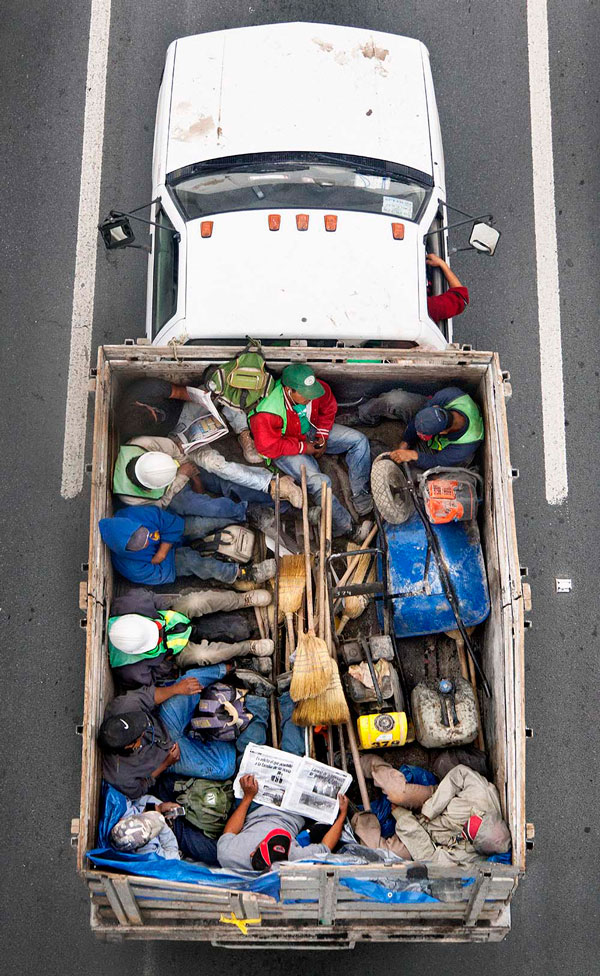“The Collective Memory of the Worst Place to Live in the World Today If You Are Not White” is a small but nicely arranged exhibition comprised of Alejandro Cartagena’s current and previous work, contrasting Santa Barbara, California with Monterrey, Mexico.
The main work displays a collection of 59 images, hung in five rows placed on top of an American flag wall mural that extends to the floor. Additionally, five pairs of photographs hang on the opposing walls outside of the flag’s boundaries. Among the photographic images presented in the main piece is one of 22-year-old multiracial Elliot Rodger, who conducted the Isla Vista rampage near UC Santa Barbara in 2014. Two places further left is Richard Martinez, the father of one of the victims. On Rodger’s right hangs a picture of a young Ronald Reagan, who supported the Brady Act and embraced gun control.
Underneath Reagan’s picture is a title page from the Daily News with the headline “Shame on U.S.” and photos of the victims of the Sandy Hook Elementary School shooting. These images are surrounded by film stills of actor Cruz Castillo from the TV-series Santa Barbara, actress Vivien Leigh, and also a souvenir postcard, a hiring sign and other photographs that Cartagena took while roaming around Santa Barbara in 2015.
The installation’s simple geometry requires that we view American ideals of egalitarianism and myths of equality from without. Cartagena himself has said that on his first visit to Santa Barbara, he became keenly aware of the city’s disparities and came to understand his project not just as an observation of Santa Barbara, but a discussion on a larger scale of the discontinuities between American ideals, and the realities within. His perceptiveness as an outsider yields the kind of observations that confront us with realities we may be reluctant to see. With the perpetrator’s image at the center, Cartagena elicits reflections on Rodger’s loneliness, racism and hate crime; he invites the viewer to consider these within a larger cultural context: the superficiality that wealth, fame and the movie industry generates. However, Cartagena doesn’t provide answers.
In a separate section, the exhibition juxtaposes Cartagena’s previous project “Carpoolers,” which shows a group of Mexican men in the back of pick-up trucks as they’re on their way to work from a suburb in Monterrey to San Pedro, Mexico, with his expansive Santa Barbara work. The two projects connect in their subtle commentary on economic inequality: Monterrey is considered one of the wealthiest cities in Mexico, yet workers often receive low pay. The political undertone in Cartagena’s art recalls the works of photographers Chris Killip and Walker Evans, whose works also addressed economic disparities. Displaying Cartagena’s previous and current project together places in stark relief the kind of isolation and social exclusion endured by immigrants to this country due to racism or lack of social status. This certainly stirs discussion of American ideals and points to the need for multicultural collaborations.



